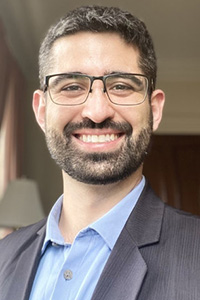Home-Based tDCS Brain Stimulation Treatments Reduced Inattention in Adults with ADHD
Home-Based tDCS Brain Stimulation Treatments Reduced Inattention in Adults with ADHD

Researchers have obtained promising results in a clinical trial of a home-based non-invasive brain stimulation treatment for adults with ADHD.
Douglas Teixeira Leffa, M.D., Ph.D., of the Universidade Federal do Rio Grande do Sul in Brazil, was first author of the paper reporting the results in JAMA Psychiatry. Dr. Leffa’s 2020 BBRF Young Investigator project was devoted to performing the study. Luis Augusto Rohde, M.D., Ph.D., of the same university, was the paper’s senior author.
The study was motivated by several factors. One is that long-term adherence to stimulant medicines, which are the first-line treatment for people with ADHD, is often low, the researchers said, due to adverse events, minimal symptom response, or patient disinclination to remain on drug treatments over an extended period of time.
A form of non-invasive brain stimulation called transcranial direct current stimulation (tDCS) has been tested on a pilot basis in ADHD patients, but results have been inconclusive, in part due to small patient sample sizes and brief trial test periods. To address this Drs. Leffa, Rohde and colleagues conducted a randomized, placebo-controlled trial of tDCS in 64 adult patients diagnosed with moderate to severe ADHD. tDCS involves application of a low-intensity current over the scalp intended to alter the excitability of cortical neurons and thereby increase brain plasticity. Conventional tDCS protocols involve daily treatments provided at medical centers or offices, thus requiring patients to make repeated visits over the several weeks of a typical treatment period.
In their trial, Drs. Leffa, Rohde and colleagues employed a low-power tDCS device that can be used safely in the home without medical supervision. It was developed at the Hospital de Clinicas de Porto Alegre in Brazil and had been used safely in previous trials. The device, featuring electrodes embedded at precise locations within a rubber skull cap, was designed to have a user-friendly interface. It can automatically stop a session if the current is too high and enables a user to stop a session if feeling discomfort; and it can be preprogrammed to deliver a specific number of sessions at specific dosages. The device will not work if the interval between two sessions is less than 16 hours.
Patients, most in their 30s and 40s and about evenly divided among men and women, were assigned to “active tDCS” or “placebo” groups and instructed on how to use the device. The placebo device, indistinguishable superficially, delivered the sensation of actual treatments but no actual stimulation. After receiving an initial tDCS (or placebo) session while assisted by staff, participants over the next 4 weeks were instructed to self-administer tDCS sessions at home lasting 30 minutes each day, seven days a week. Apart from being asked to take the treatment while seated and at the same time each day, there were no additional behavioral limitations.
Importantly, participants were not taking stimulant medications for their ADHD (or agreed not to take them for 30 days before beginning the trial). A few were taking medicines for moderate depression or anxiety. After an initial evaluation, all were assessed after the 2nd week of the trial and after its conclusion in week 4.
Fifty-five participants finished the trial, and on average they completed nearly all (25 of 28) of the prescribed self-administered tDCS sessions. Analysis showed that those who received active tDCS had decreased symptoms of inattention as compared with those in the placebo group. The advantage of the active treatment was not seen until after the 2nd week of the trial, suggesting to the team that brief treatment courses may not deliver sufficient stimulation to have a noticeable therapeutic effect.
The active tDCS treatment was not associated with improvements in hyperactivity-impulsivity symptoms, which are also experienced by many people with ADHD. (About half of those who took part in the trial had such symptoms, in addition to inattention). The treatment also did not improve symptoms of depression, anxiety, or deficits in executive function that some participants experienced prior to the trial.
Most of those who dropped out did so due to COVID-period complications. Mild side effects were reported, typical of tDCS: redness of the skin, headache, and minor burning of skin on the scalp.
“Our findings support the use of tDCS as a safe and effective treatment for adults with ADHD with no concomitant treatment with stimulants,” the researchers concluded. The home-based device used in the trial “opens a new window of opportunity,” they suggested, “especially for patients who live in geographically remote areas or have disabilities which may hinder access to clinical centers.”
One challenge for future tests of the approach, the team said, would be to individualize home-based tDCS using stimulation intensities and session times tailored to the needs of specific patients. tDCS should also be tested in ADHD patients with various comorbidities and in those who are receiving pharmacological treatment for ADHD, they suggested.
The team included: Joan Camprodon, M.D., Ph.D., MPH, a 2010 BBRF Young Investigator; and André Brunoni, M.D., Ph.D., a 2013 BBRF Young Investigator.



